Tony Sun
Locality Alignment Improves Vision-Language Models
Oct 14, 2024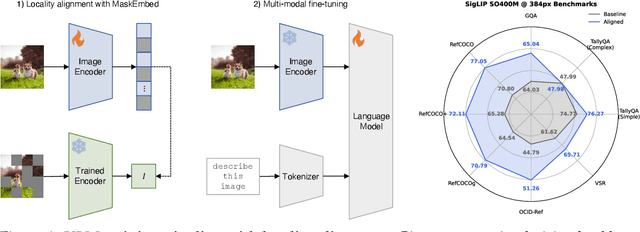
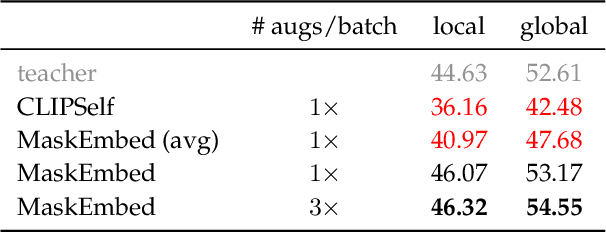
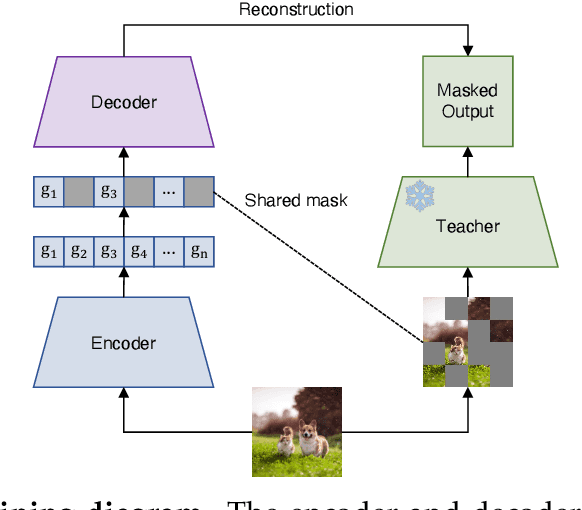

Abstract:Vision language models (VLMs) have seen growing adoption in recent years, but many still struggle with basic spatial reasoning errors. We hypothesize that this is due to VLMs adopting pre-trained vision backbones, specifically vision transformers (ViTs) trained with image-level supervision and minimal inductive biases. Such models may fail to encode the class contents at each position in the image, and our goal is to resolve this by ensuring that the vision backbone effectively captures both local and global image semantics. Our main insight is that we do not require new supervision to learn this capability -- pre-trained models contain significant knowledge of local semantics that we can extract and use for scalable self-supervision. We propose a new efficient post-training stage for ViTs called locality alignment and a novel fine-tuning procedure called MaskEmbed that uses a masked reconstruction loss to learn semantic contributions for each image patch. We first evaluate locality alignment with a vision-only benchmark, finding that it improves a model's performance at a patch-level semantic segmentation task, especially for strong backbones trained with image-caption pairs (e.g., CLIP and SigLIP). We then train a series of VLMs with and without locality alignment, and show that locality-aligned backbones improve performance across a range of benchmarks, particularly ones that involve spatial understanding (e.g., RefCOCO, OCID-Ref, TallyQA, VSR, AI2D). Overall, we demonstrate that we can efficiently learn local semantic extraction via a locality alignment stage, and that this procedure complements existing VLM training recipes that use off-the-shelf vision backbones.
NL-Augmenter: A Framework for Task-Sensitive Natural Language Augmentation
Dec 06, 2021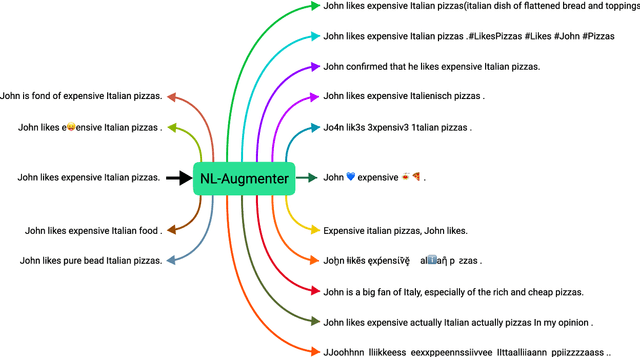
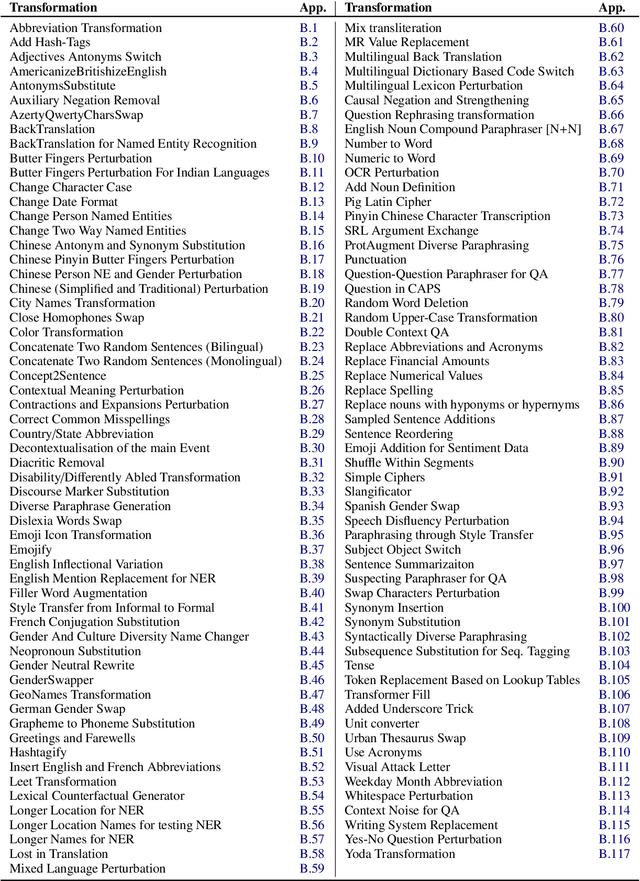
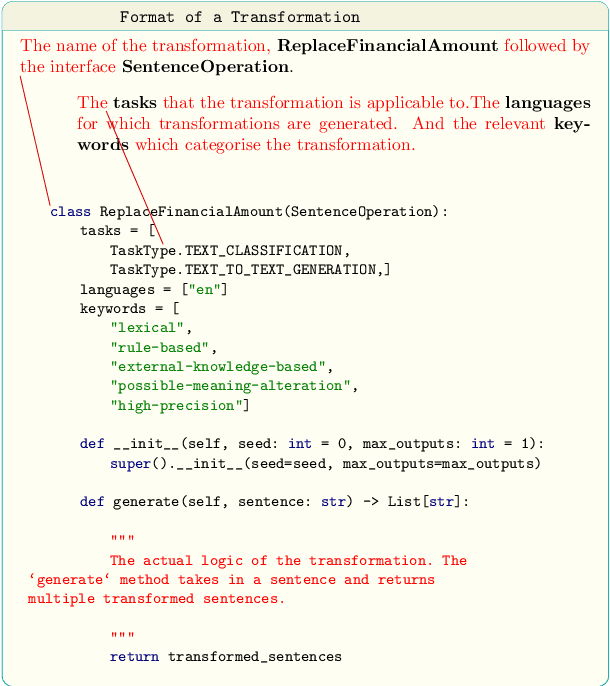
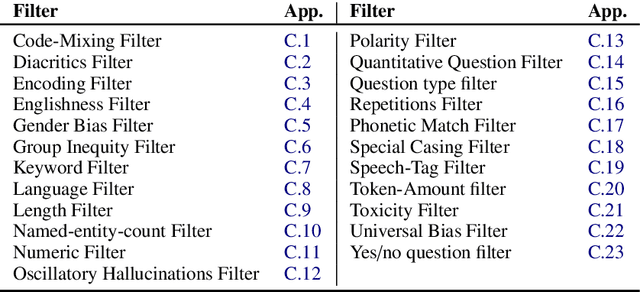
Abstract:Data augmentation is an important component in the robustness evaluation of models in natural language processing (NLP) and in enhancing the diversity of the data they are trained on. In this paper, we present NL-Augmenter, a new participatory Python-based natural language augmentation framework which supports the creation of both transformations (modifications to the data) and filters (data splits according to specific features). We describe the framework and an initial set of 117 transformations and 23 filters for a variety of natural language tasks. We demonstrate the efficacy of NL-Augmenter by using several of its transformations to analyze the robustness of popular natural language models. The infrastructure, datacards and robustness analysis results are available publicly on the NL-Augmenter repository (\url{https://github.com/GEM-benchmark/NL-Augmenter}).
They, Them, Theirs: Rewriting with Gender-Neutral English
Feb 12, 2021
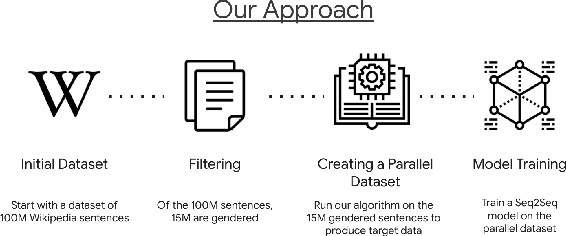
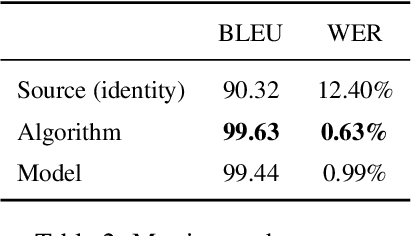

Abstract:Responsible development of technology involves applications being inclusive of the diverse set of users they hope to support. An important part of this is understanding the many ways to refer to a person and being able to fluently change between the different forms as needed. We perform a case study on the singular they, a common way to promote gender inclusion in English. We define a re-writing task, create an evaluation benchmark, and show how a model can be trained to produce gender-neutral English with <1% word error rate with no human-labeled data. We discuss the practical applications and ethical considerations of the task, providing direction for future work into inclusive natural language systems.
BOLD: Dataset and Metrics for Measuring Biases in Open-Ended Language Generation
Jan 27, 2021



Abstract:Recent advances in deep learning techniques have enabled machines to generate cohesive open-ended text when prompted with a sequence of words as context. While these models now empower many downstream applications from conversation bots to automatic storytelling, they have been shown to generate texts that exhibit social biases. To systematically study and benchmark social biases in open-ended language generation, we introduce the Bias in Open-Ended Language Generation Dataset (BOLD), a large-scale dataset that consists of 23,679 English text generation prompts for bias benchmarking across five domains: profession, gender, race, religion, and political ideology. We also propose new automated metrics for toxicity, psycholinguistic norms, and text gender polarity to measure social biases in open-ended text generation from multiple angles. An examination of text generated from three popular language models reveals that the majority of these models exhibit a larger social bias than human-written Wikipedia text across all domains. With these results we highlight the need to benchmark biases in open-ended language generation and caution users of language generation models on downstream tasks to be cognizant of these embedded prejudices.
Towards Understanding Gender Bias in Relation Extraction
Nov 09, 2019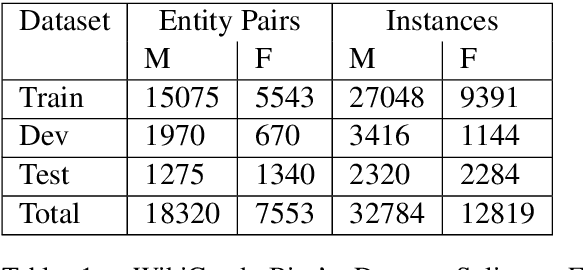
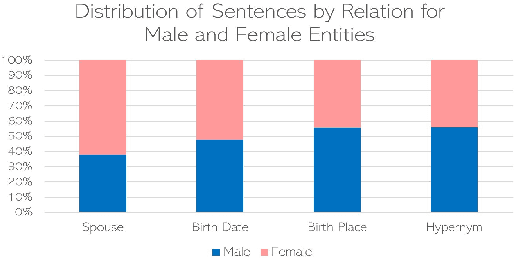


Abstract:Recent developments in Neural Relation Extraction (NRE) have made significant strides towards Automated Knowledge Base Construction (AKBC). While much attention has been dedicated towards improvements in accuracy, there have been no attempts in the literature to our knowledge to evaluate social biases in NRE systems. We create WikiGenderBias, a distantly supervised dataset with a human annotated test set. WikiGenderBias has sentences specifically curated to analyze gender bias in relation extraction systems. We use WikiGenderBias to evaluate systems for bias and find that NRE systems exhibit gender biased predictions and lay groundwork for future evaluation of bias in NRE. We also analyze how name anonymization, hard debiasing for word embeddings, and counterfactual data augmentation affect gender bias in predictions and performance.
Mitigating Gender Bias in Natural Language Processing: Literature Review
Jun 21, 2019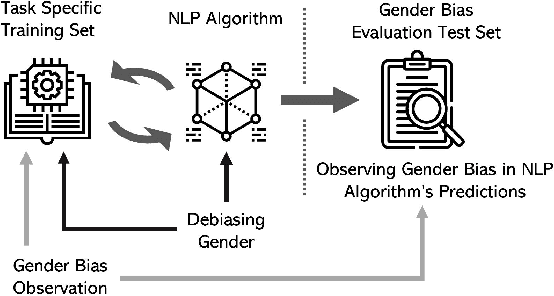
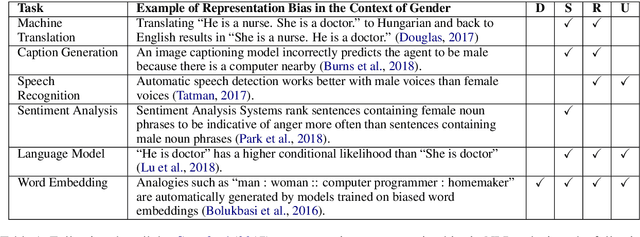

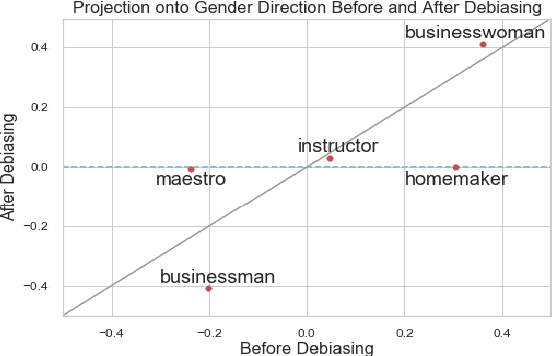
Abstract:As Natural Language Processing (NLP) and Machine Learning (ML) tools rise in popularity, it becomes increasingly vital to recognize the role they play in shaping societal biases and stereotypes. Although NLP models have shown success in modeling various applications, they propagate and may even amplify gender bias found in text corpora. While the study of bias in artificial intelligence is not new, methods to mitigate gender bias in NLP are relatively nascent. In this paper, we review contemporary studies on recognizing and mitigating gender bias in NLP. We discuss gender bias based on four forms of representation bias and analyze methods recognizing gender bias. Furthermore, we discuss the advantages and drawbacks of existing gender debiasing methods. Finally, we discuss future studies for recognizing and mitigating gender bias in NLP.
 Add to Chrome
Add to Chrome Add to Firefox
Add to Firefox Add to Edge
Add to Edge